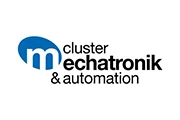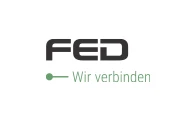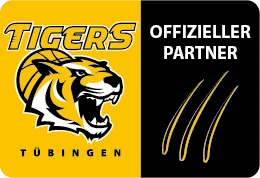What needs to be considered when developing a workpiece carrier?
The development of customised workpiece carriers requires careful planning and consideration of various factors to ensure that the carriers meet the customer's requirements and match the selected soldering process so that it works efficiently ...
How can EUTECT support the optimisation of selective soldering processes?
New products, product adaptations and variations, new suppliers or new supplier products - the reasons for optimising selective soldering processes can be manifold, e.g. if a new supplier for printed circuit boards has been selected after several years ...
Why are the soldering masks at EUTECT made of titanium?
The customer only gets real process stability and benefits from selective soldering or soldering with mini wave and mask technology if the mask has been developed and manufactured in relation to the soldering nozzle, thereby ensuring that they function together ...
Why do we install robots overhead in our process cells?
When we use 6-axis robots from our suppliers Stäubli and Mitsubishi, we usually install them overhead in our process cells. The reason for this is simple: in order to integrate as many processes as possible in a small space in the cell, we need to have the space for handling the assembly or the workpiece carrier so ...
Why are evaluations crucial to the process?
Our EUTECT technical centre is equipped with all soldering process modules from our range. In the technical centre, we evaluate your product using our processes in order to achieve the goals required by you or your customer or to make them even more efficient with newly developed solutions ...
Why does EUTECT rely on control technology when designing the various soldering modules and kinematics?
A process can only really be controlled if the technology knows how the process is behaving at the solder joint during a soldering process. At EUTECT, innovative and globally unique technologies such as the EUTECT wire feeder SWF are used for this purpose, while a wide range of sensors and pyrometers are used to collect data ...
Does EUTECT also support system integrators with its modules and process expertise?
As a specialist for selective soldering processes, EUTECT offers a globally unique process and system solution in combination with EUTECT control technology and EUTECT software, which is available to every system integrator as a modular system ...
Which parameters must be focussed on when evaluating the optimum soldering process?
When developing the best possible technical implementation for soldering tasks, the product with its given design and any possible design adaptations, the desired product quality, the existing and required automation concepts in production and the process quality are at the centre of our activities ...
How can soldering processes be planned, designed and implemented sustainably and ecologically?
Sustainable, ecological soldering processes can be realised in various ways. Of course, the simplest option is to optimise the overall process in terms of energy requirements alone so that it consumes as little electricity as possible ...
How can flux be applied effectively and sparingly before the selective soldering process?
Fluxes, such as those from our partner Emil Otto, are an essential part of a soldering process. The application of flux, as an independent process, therefore requires just as much expertise as the subsequent soldering process ...
What temperatures can be reached during high-temperature soldering and where are they used?
With specific selective soldering processes from Eutect, coated enamelled copper wires can be thermally soldered in a single step and without additional removal of the insulation. The core expertise in the lead-free processing of characteristic solder alloys forms the specific process knowledge ...
How can batch size 1 be effortlessly integrated into the selective inline soldering process?
Batch size 1 or small quantities pose challenges for every process, because the established series production has to be interrupted in a time-consuming manner. New ideas and concepts are therefore necessary ...
When do I use thermode soldering or iron soldering and when do I use the Laser Knife?
Compared to conventional thermode soldering, the Laser Knife offers a significantly higher process speed and energy efficiency. Thanks to the non-contact soldering process with a laser beam, we achieve up to 10 times the speed of thermode soldering and reduce the energy requirement by 70%. ...
Do you have ball formations on the wire or solder joint during laser soldering?
A flawless solder pattern is essential for a clean, reproducible laser soldering process. Solder balls during the soldering process must be avoided at all costs, as they can cause short circuits on the assembly or non-reproducible solder quantities ...
Is preheating assemblies unnecessary stress for components?
Each preheating process must be checked physico-chemically in holistic coordination with the neighbouring components, soldering surfaces, heat sinks, solder penetration and quality requirements for the process sequence, as each heating process can trigger an additional ageing process for the assembly to be processed ...
Does your soldering process cause burns on the assembly?
When it comes to burns during laser soldering, there are many factors and influences to consider, from positioning, the selection of the correct focus diameter, the optimum solder wire, the process surfaces of the joining partners, through to other influencing variables ...
How can blowholes be avoided when soldering THT components?
One reason may be that the solder pin, including the solder pin housing environment, seals the hole in which it is inserted tightly from above and thus prevents the air from escaping upwards from the solder joint. In this case, it may be that the hole diameter for the pin is too narrow and that ...
Do you have too little flux on the solder joint but too much on the assembly?
The devil is often in the detail when it comes to precise fluxing. If you adjust the flux application that applies the flux to the PCB, you can control the result quite precisely, even if the flux is applied very quickly ...
Which selective soldering process is the right one for my end product?
Processed components (SMD/THT?), number of assemblies and solder joints, cycle times, PCB design and number of profile changes and, finally, the budget. These parameters are checked in an evaluation that takes place in the EUTECT technical centre ...




